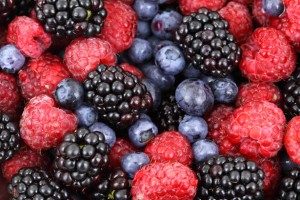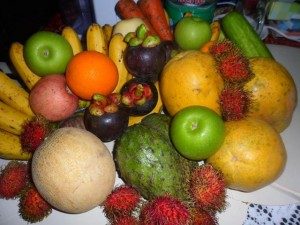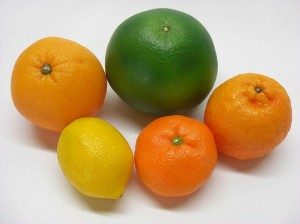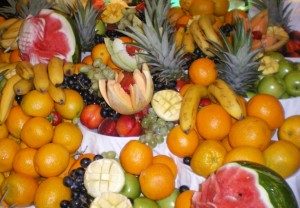Raw Juice therapy and Smoothies for Graves’ Disease and Hyperthyroidism
How it works:

Raw juices of fruits and vegetables contain a lot of vitamins, minerals, trace elements, enzymes and natural sugars which helps normalizing all body functions or whose who might be affected by a disease. They supply the necessary elements for the body’s own healing activity and cell regeneration, thereby speeding the recovery process and healing.
The juices extracted from raw fruits and vegetables require no digestion and almost all their vital nutrients are integrated directly in the bloodstream. They are also extremely rich in alkaline elements, which is highly favorable for normalizing acid-alkaline balance in the blood and tissues as there is over-acidity in most conditions of illness. The generous amounts of organic minerals in raw juices especially calcium, potassium and silicon help the restoration of biochemical and mineral balance in the tissues and cells, thereby stopping the premature ageing of cells and disease.

Raw juices contain certain natural remedies, vegetal hormones and antibiotics. For example, it is found by scientists that string beans contain substance that imitates insulin. The hormones, necessary for the pancreas to produce insulin are present in cucumber and onion juices. The fresh juices made of garlic, onions, radish and tomatoes are found to contain antibiotic ingredients, which doesn’t mean that you should not take the one prescribed by your doctor, but can add fresh juices of these vegetables to speed up the healing process.
 You can make raw juices from practically anything that is “juicable”. I have tried juicing all kinds of fruits and vegetables and honestly, some came out very tasty, while others I can’t really drink. You should also juice vegetables and fruits that can be consumed naturally in a raw form (for example I would not juice potatoes).
You can make raw juices from practically anything that is “juicable”. I have tried juicing all kinds of fruits and vegetables and honestly, some came out very tasty, while others I can’t really drink. You should also juice vegetables and fruits that can be consumed naturally in a raw form (for example I would not juice potatoes).
6 Main types of Fruit and vegetable juices
- Juices from sweet fruits such as prunes and grapes.
- Juices from sub-acid fruits like apple, plum, pear, peach, apricot and cherry;
- Juices from acid fruits like orange, lemon, grapefruit, strawberry and pineapple.
- Juices from vegetable fruits, namely, tomato and cucumber.
- Juices from green leafy vegetables like cabbage, celery, lettuce, spinach, parsley and watercress.
- Juices from root vegetables like beetroot, carrot, onion, ginger, potato and radish.

There are some recommendations that you can follow in order to get the best of the vegetables and fruits. I am not saying that you should not experiment, but generally limit the number of vegetables/fruits to 3 or maximum 4 in one juice. Otherwise you wouldn’t know what exactly you are drinking.
10 General Recommendations for Raw Juice preparation
- Juices should be made only from fresh vegetables and fruits, don’t try to add canned or otherwise processed vegetables or fruits.
- Make only the quantity you’ll drink immediately, because raw juices tend to oxidize and their medicinal properties may just vanish.
-

Acid Fruits for Fresh Juicies Use preferably organic or locally grown vegetables and fruits.
- Combine juices from sweet fruits (grapes or prunes) with juices of sub-acid fruits (apple, pear), but avoid combining them with acid fruits (lemon, pine apple), vegetable fruits (tomatoes or cucumber) or vegetables (onion and beetroot).
- Combine juices from sub-acid fruits with juices of sweet fruits (or acid fruits), but not with other juices.
- Combine juices from acid fruits with those of sub-acid fruits (apples, pear) or vegetable fruits (tomatoes, cucumber), but not with other juices.
- Combine juices from vegetable fruits (tomatoes, cucumber) with those of acid fruits (lemon, orange, grapefruit) or of green leafy vegetables, but not with other juices.
- Combine juices from green leafy vegetables with those of vegetable fruits or of the root vegetable, but not with other juices. (Lettuce and pineapple is not a very tasty combination, believe me).
- Combine juices from root vegetables with those of green leafy vegetables, but not with other juices.
- You can add different leafy herbs, like Lemon Balm or Mint, for example to vegetable juices. You may also use the vegetable residuals for soups or casseroles.
-

Fruits of all kinds that can be used for fresh juices When vegetables are not “juicable”, like bananas, cantaloupe, or papaya, they are simply mixed to produce a smoothie.
A proper selection of juices in treating a particular ailment is very essential. For example, insomnia can be helped with apple, grapes, lemon, lettuce, carrot and celery. Sore throat will benefit from: Apricot, grapes, lemon, pineapple, prune, tomato, carrot and parsley. Eye problems: Apricot, tomato, carrot, celery, parsley and spinach.
I am also featuring on my blog about Graves’ Disease and Hyperthyroidism some recipes of Fruit Smoothies and Raw Juices by Mariquit Losaria Orendain, who is my guest writer this month and agreed to share some of her raw juice recipes with us. They are tasty (I tried them already), nutritious and easy to implement. Thank you Mariquit! Click on the link to read them now:
Fruit Smoothies and Raw Juices by Mariquit Losaria Orendain
So speaking, Raw Juice Therapy may be very helpful, if followed with some precautions. I also included a few Green smoothies in my book “Ultimate Diet Secrets for Graves’ Disease and Hyperthyroidism”, which was just updated in August, 2013. This are some examples of what recipes for smoothies you can find there:
Orange – banana – chard smoothie
Orange – banana – plum – lemon – more chard smoothie
Banana-lime-apple-milk-chard smoothie
Banana – lemon – apple – milk – plum – mint smoothie
Simple Sprout Smoothie
Antioxidant Veggie Smoothie
Feel free to check it out: “Ultimate Diet Secrets for Graves’ Disease and Hyperthyroidism”
 or just go straight to the “Books” section:
or just go straight to the “Books” section:
